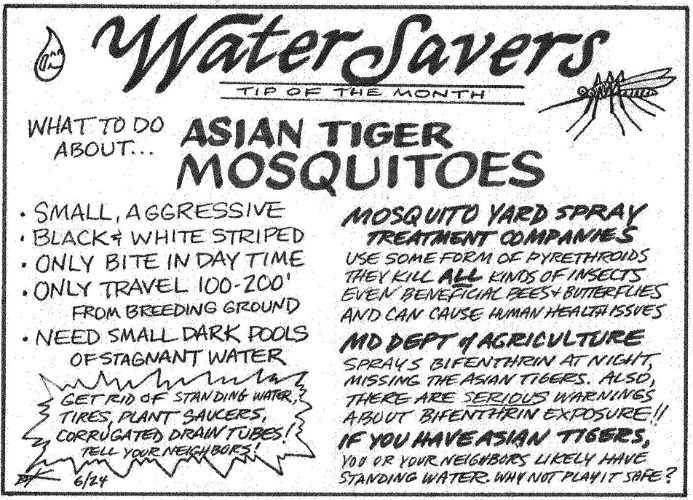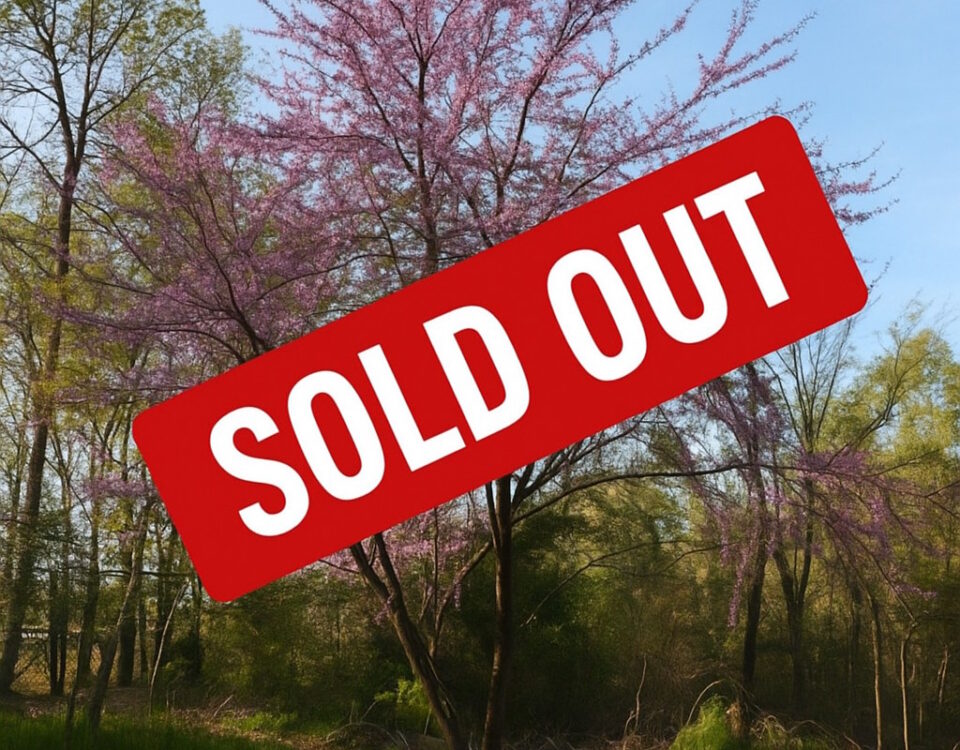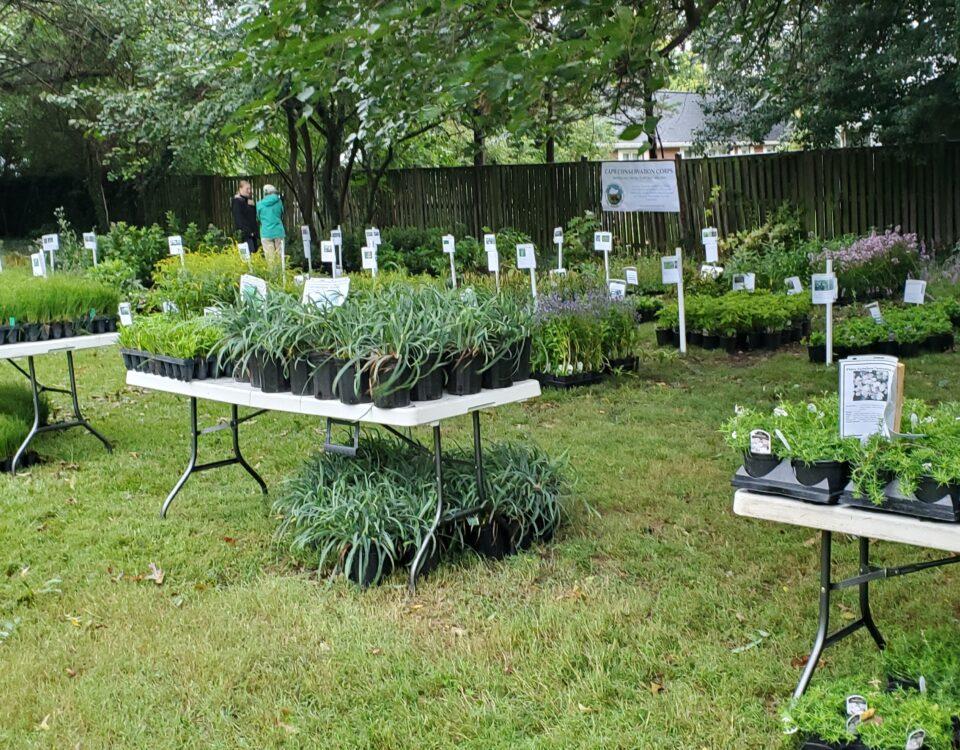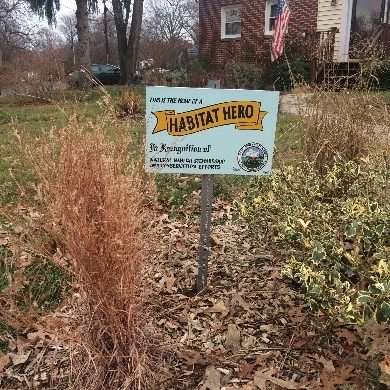
Habitat Hero – December 2019
December 20, 2019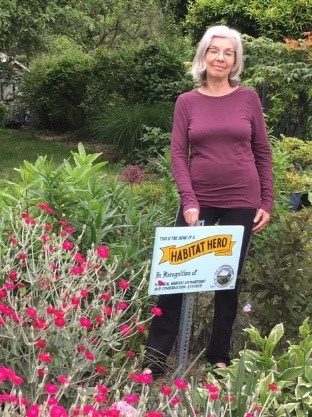
Habitat Hero – June 2020
January 20, 2020By: Stacey Wildberger
Every year as I add more native plants I am hoping to increase the diversity in the types of insects, pollinators, and in particular butterflies I see in my backyard. As we know by now if you want butterflies you need caterpillars and if you want caterpillars you must have the proper habitat and host plant to attract the adult (butterflies) to lay eggs. Most caterpillars can only eat 1 or 2 types of plants to survive. The most common example of the host plant-caterpillar-butterfly relationship is of course the Monarch but there are many other types of these specialized relationships. This year I was able to attract several new-to-my-yard species of butterflies. I am convinced it was because I have laid the groundwork necessary to provide the proper habitat for them. There are five species that I saw this year and I will tell you what I did to attract them.
The first new-to-me species of butterfly I saw in my yard this past summer was the Zebra Swallowtail butterfly, a black-white zebra like striped butterfly with long, almost triangular wings. These butterflies grow between 2-4’ and prefer moist wooded areas where the Asimina triloba paw-paws grow because the paw-paw is the only host plant of the Zebra Swallowtail, they lay a single egg on the underside of a paw-paw leaf. The adults nectar on a variety of native plants but prefer shorter, flatter flowers due to their short proboscis. Cercis Canadensis Eastern Redbud flowers, Asclepias sp. milkweed, phlox and Eutrochium sp. Joe-Pye weed are great examples of preferred nectar sources for these beauties. You will notice them flying low to the ground, in an erratic way or groups of males gathered on moist sandy soil to obtain salt and other nutrients. Guess what I have growing in my yard? If you guessed Asimina triloba paw-paws (their host plant), redbud, milkweed, phlox and Joe-Pye weed you will know why I saw this amazing creature in my yard!
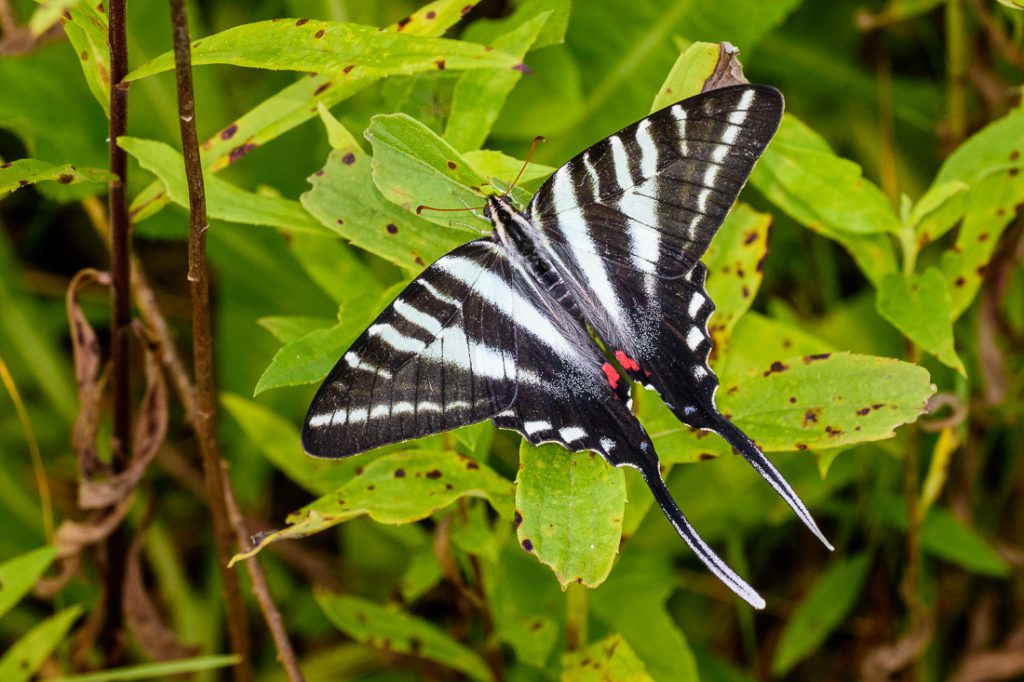
This next one might have scratching your head –the caterpillar looks like a cartoon character, if you are familiar with Pokémon you may confuse him for one of them! They resemble small snakes because they have large eye spots, giving them the appearance they have a “face”. The Spicebush Swallowtail lays their eggs on the Lindera benzoin spicebush and Sassafras. I have planted several Spicebush (a small understory tree) over the last few years and sassafras has volunteered in my yard and many Cape yards. This past summer was the first time I was honored with a Spicebush swallowtail laying her eggs on my plant. Once they hatch they spend their days wrapped in the leaf- look for a curled up leaf and inside will be the caterpillar, they come out at night to munch on the leaves. The butterfly is beautiful black bodied creature with shiny blue or green wings. They generally stay low to the ground and prefer woodland areas. Their choice of nectar plants include milkweed- and I have lots of that to keep them well fed!
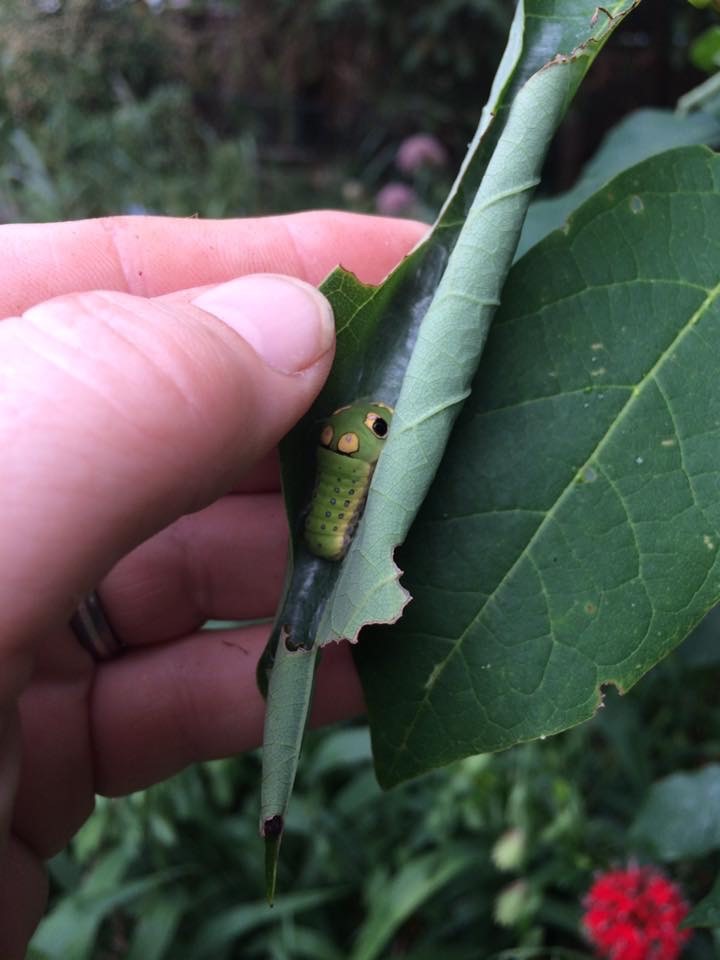
When I read that backyard wildlife habitat expert, blogger and author Nancy Lawson had the Question Mark butterfly in her yard because she grew their host plant, false nettles, I headed down to my favorite native plant nursery, Chesapeake Natives and bought a flat (15) Boehmeria cylindrica false nettle and promptly planted them—within a month I saw my first of two Question Mark butterflies for the season. They also will use Celtis occidentalis hackberry, Humulus lupulus hops and red elms as a host. They have a remarkable shape, a hooked forewing, they are a red-orange with black spots, short mostly black hindwing and light brown underside. There is a distinct “question mark” on the ventral side. They will nectar on a wide range of native plants so offer a variety and they will be happy!
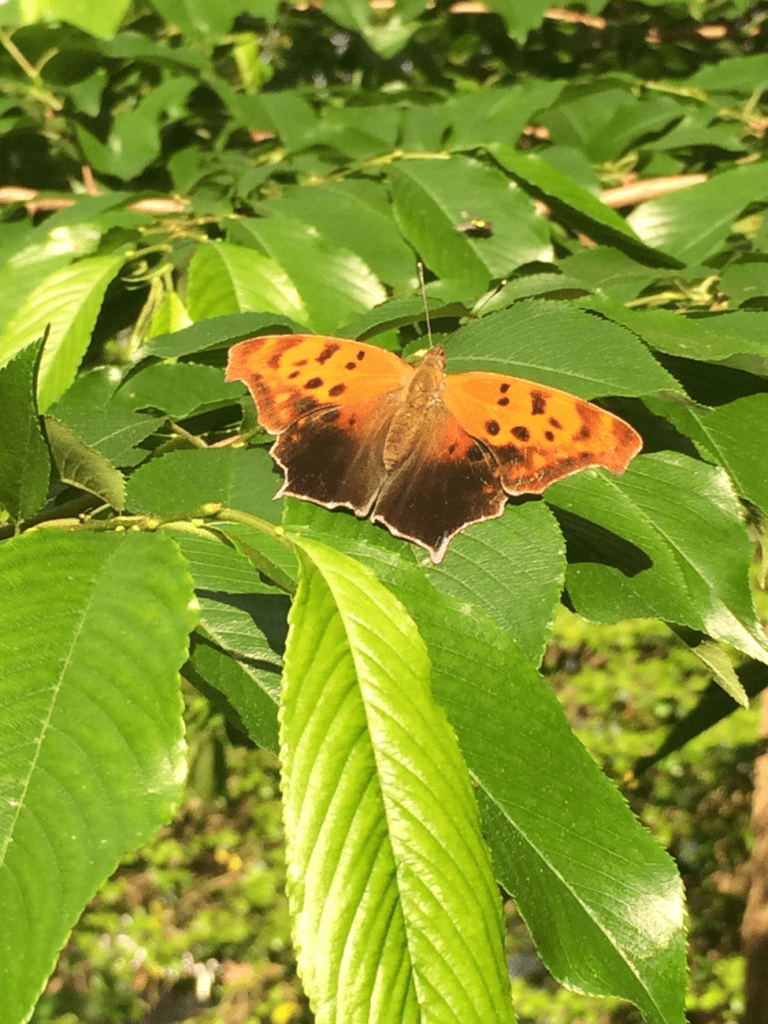
Another beauty that graced my modest ecosystem was the wide-spread Red Admiral (it can be found in all three North American countries (no walls impede their journey). Their size and distinct color patterns make them easy to identify; a bright red band splashes the upper side of a black forewing with white spots near the wing tips makes these a real standout! This is another butterfly that uses nettles and false nettles as their host plant as well as asters. They like to drink sap from the trees, rotting fruit and bird droppings! They will also nectar on native milkweed, clover, and asters. Look for black caterpillars with white-light yellow speckles with black, branched spikes near the rear as well as seven yellow bands to identify if you have the larval form of the Red Admiral butterfly. I grow several varieties of milkweed, and asters as well as the false nettle (host plant) that I added that allowed me to attract this popular butterfly.
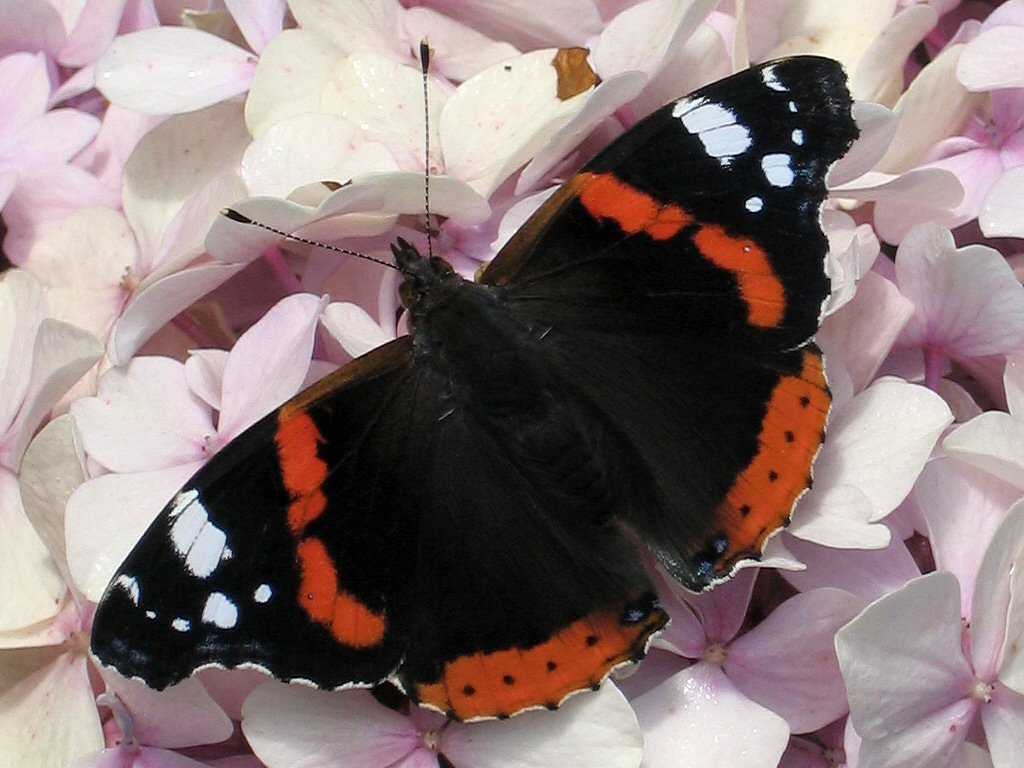
The final new-to-me butterfly was the Red-Banded Hairstreak. This tiny butterfly could easily be missed nectaring amongst your Pycnanthemum sp. mountain mint, Solidago goldenrods, Rudbeckia hirta black eyed-susans, and goldenrod. Where I discovered my beautifully banded with a red sash across the wings was on my Rudbekia laciniata cut leaf coneflower. For these beauties even more important than the nectar plants is the habitat you provide so they can lay their eggs successfully. Their host plant is actually what many people rake up and cart to the landfills—leaf litter! Litter has such a negative connotation, I actually prefer the term leaf mulch. I am always reminding you to leave the leaves and this is a perfect example of a species that is using and benefiting from the leaves you keep on your property. Their preferred fallen leave to use are that of the Rhus sp. Sumac (not poisonous). They will always use Morella cerifera wax myrtle and Quercus sp. Oak. It is important to note that they will overwinter sheltered in the leaf litter as a 4th instar caterpillar, emerging in the spring as the diminutive butterfly they were destined to become. No leaf litter from your sumacs, oaks and wax myrtles and you will not be graced by these butterfly. Leave the leaves!!
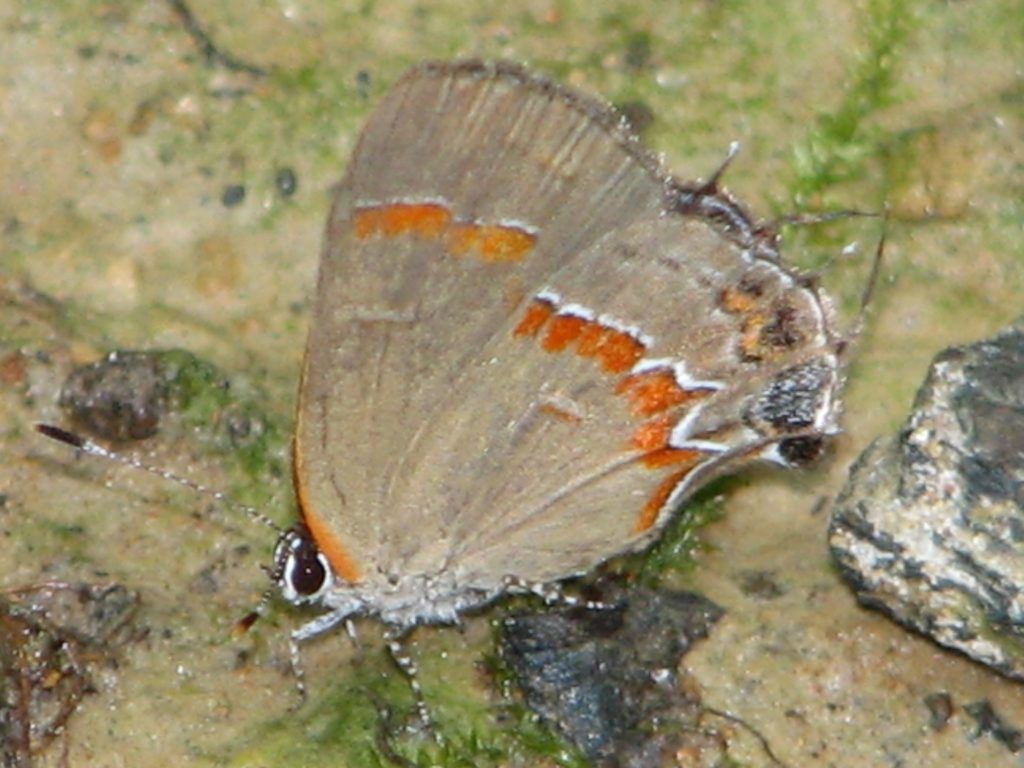
Once I began to increase the diversity of native plants in my yard and began paying attention to the host plants required for a specific butterfly or habitat requirements I began to see the variety of species increase significantly in my backyard. Species I had never seen before were beginning to make my garden their home! I recommend looking for the butterflies you wish to attract and adding their host plants and favorite nectar sources to your garden and wait for them to arrive.
Please email me at [email protected] if you want help to finding the host plants you need to attract the butterflies you want!
Big Shout and Thank You! Christmas Tree Pick-Up
Many of you participated in helping Beverly Triton Beach with their shoreline erosion project by donating your Christmas Trees to them. I want to thank each of you for participating and a BIG thank you to Matthew Toronto, owner of hauling business Matthew Hauling for volunteering his time to pick up and transport over 60 trees to Beverly Triton Beach with the help of several volunteers. Please show your apperception for his time and effort by calling Matt for your hauling needs! He can be reached @ 443.838.4352. Matt lives right here in Cape St Claire so you would be supporting a local business that graciously donated his time and resources. We would love to repeat this again but could use many more volunteers with pickup trucks and trailers. Stay tuned for more on this next Christmas season!



